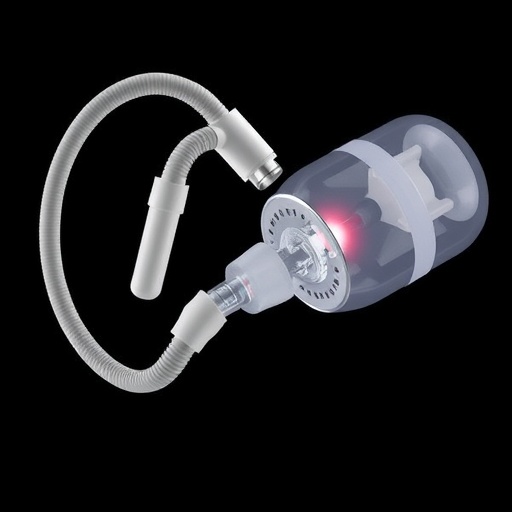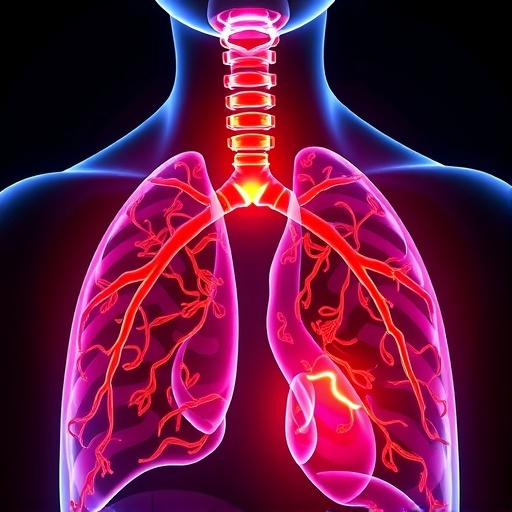In emergency medicine, securing an open airway swiftly and reliably is paramount. The flow of oxygen to the lungs underpins every subsequent life-saving intervention, meaning that if the airway is compromised, other efforts often become futile. Yet, the gold standard for airway management—endotracheal intubation—is a notoriously complex skill, demanding not only extensive training but also controlled conditions. In chaotic environments such as the field or the emergency room, where every second counts, intubation becomes a daunting challenge fraught with unpredictable obstacles that severely impact success rates.
Traditional endotracheal intubation requires the practitioner to have detailed anatomical knowledge alongside finely honed skills to manually guide a rigid tube through the intricate and variable geometry of the upper airway. The procedure entails first visualizing the tracheal opening and then deftly maneuvering the tube past critical delicate structures like the epiglottis and vocal cords. This task is made more difficult outside hospital settings, with poor lighting, awkward patient positioning, airway contamination, and trauma further complicating visibility and maneuverability. The high dependence on ideal conditions and expert training often limits the availability and success of this life-saving procedure.
Imagine a device that could autonomously navigate the airway without relying heavily on the user’s expertise or perfect conditions. Researchers at UC Santa Barbara, led by mechanical engineering professor Elliot Hawkes and Ph.D. graduate David Haggerty, have devised a novel soft robotic intubation system that promises such a paradigm shift. Published in the esteemed journal Science Translational Medicine, their innovative device abandons electronic components entirely, instead utilizing soft robotics principles to rapidly and self-guidedly insert a flexible tube into the trachea.
Unlike conventional rigid laryngoscopes and tubes, which must be pushed through the airway—often resulting in tissue damage or frustrating manipulation—the new soft robotic intubation system (SRIS) autonomously “grows” its way through the complex anatomy. This growing mechanism minimizes friction and injury by gently conforming to the airway’s contours without imposing rigid forces against sensitive structures. Essentially, the device elongates itself, steering around bends and variations naturally, which is an ingenious solution to the torturous anatomical path the tube must traverse.
A key hurdle in traditional intubation is the epiglottis, a small yet pivotal flap that instinctively directs food and liquids away from the lungs by covering the tracheal opening during swallowing. To pass the endotracheal tube safely, clinicians must use a rigid laryngoscope blade to lift this flap out of the way—a maneuver that requires both experience and strength. However, even clearing the epiglottis does not guarantee straightforward passage because the tube must still navigate a complicated, serpentine trajectory to reach the trachea rather than mistakenly advancing into the esophagus, which would be catastrophic.
The rigid tools currently employed are structurally constrained: they must be stiff enough to push forward and can only negotiate airway curves by deflecting against soft tissue surfaces, which risks trauma and complications. The SRIS circumvents this fundamental limitation through its soft and adaptable design, which inherently accounts for patient-to-patient anatomical variability. This adaptability dramatically lowers the training threshold, equipping even non-expert medical providers with the ability to perform successful intubations after only a brief tutorial.
In rigorous testing, the device demonstrated extraordinary efficacy. In trials with expert users working on mannequins and cadavers, the SRIS achieved a flawless 100% success rate, completing intubations in a matter of seconds—significantly faster than conventional methods. The true breakthrough came with non-expert prehospital providers: after just five minutes of training, they attained an impressive 87% first-pass success rate and a cumulative 96% success rate overall. Notably, the procedure time was nearly halved compared to state-of-the-art video laryngoscope intubation, plummeting from an average of 44 seconds to just 21 seconds.
While these results are groundbreaking, the researchers are fully aware that cadaveric and mannequin studies do not capture real-world patient responses like pain, reflexes, or dynamic airway reactions. Consequently, the next critical phase for this technology is clinical trials regulated by the Food & Drug Administration (FDA) to validate safety and efficacy across a variety of live patient conditions. The team is optimistic, citing the inherent gentleness and adaptability of the device as key factors supporting its potential for widespread clinical use.
Should these trials succeed, the implications are profound. Millions of emergency intubations are performed annually in the United States alone, with countless more worldwide—many in austere or resource-limited settings where expert personnel and ideal environments are unavailable. The SRIS could democratize access to life-saving airway management, drastically reducing the skill barrier and improving patient survival rates globally. Military medicine and rural healthcare environments stand to benefit enormously from a robust, portable, and easy-to-use intubation system.
This revolutionary research is the product of extensive collaboration across academia and emergency medical services, including contributions from UCSB’s Linus Rydell, Vine Medical, Whatcom County EMS, University of Texas Health, Fort Worth Medical Director’s Office, Stanford University, and University of Pittsburgh Medical Center. These partnerships ensured clinical relevance complemented the engineering innovation, driving the device’s development toward real-world application.
The concept of “growing” soft robotics marks a dramatic evolution in medical device design. By leveraging the inherent flexibility and low force interaction of soft materials, the SRIS embraces the complexities of human anatomy rather than struggling against them. This approach is a significant departure from traditional devices and aligns with broader trends favoring patient-specific, minimally invasive technologies, signaling a new era where robotics can seamlessly integrate with biological systems.
Beyond emergency intubation, the principles underpinning this technology could inspire future devices across various medical fields where navigating delicate, tortuous anatomies is critical. Whether in neurosurgery, gastrointestinal interventions, or vascular access, soft growing robotics could replace cumbersome and injury-prone rigid instruments, improving safety and success rates in numerous procedures.
The advent of such autonomous smart devices offers a glimpse at how robotics can transcend mere tools, becoming intelligent partners in healthcare delivery. By reducing operator dependency and optimizing interaction with complex anatomy, soft robotics hold the promise to transform emergency medicine and beyond—potentially saving countless lives each year by bringing expert-level interventions within reach of all.
Subject of Research:
Soft robotic endotracheal intubation device for emergency airway management
Article Title:
A soft robotic device for rapid and self-guided intubation
News Publication Date:
10-Sep-2025
Web References:
DOI: 10.1126/scitranslmed.ads7681
Keywords:
Health and medicine; Medical technology; Translational medicine; Translational research
Tags: advanced airway management solutionsairway security in chaotic environmentsautonomous intubation deviceschallenges in endotracheal intubationemergency airway management technologyenhancing emergency medicine proceduresimproving patient outcomes in intubationinnovative medical technology for emergencieslife-saving medical interventionsreducing intubation complicationssoft robotics in medical devicesUCSB healthcare innovations





